Develop RAW Photo-Editing Skills
Linux Format
|November 2020
In the first of a two-part series, Alexander Tolstoy shows how to edit RAW files as he explores open source alternatives to Adobe Lightroom.

Almost everyone is a photographer these days thanks to smartphones and affordable D-SLR cameras. Taking photos can be fun, but it can become so much more – whatever equipment you might own. From starting out as a novice photographer, you can become an enthusiastic hobbyist as your skills improve. You can even turn pro and make money from something that was once just a means of capturing a moment in time.
Somewhere along the way, you’ll come across the phrase “shooting in RAW”. In this tutorial, the first part of a two-part series, we’ll explain what a RAW file is, how it’s an improvement on the JPEG format, and how you can use open-source software to work with RAW files. Part two will cover advanced RAW editing techniques.
What is the RAW format?
When we take a photograph that’s saved as a JPEG, we often don’t realise that the camera’s firmware carries out a lot of enhancement steps automatically: color balancing, de-noising, and so on. In contrast, a RAW file is a minimally processed set of data taken directly from the camera’s image sensor. RAW files contain more color data and therefore can provide a wider dynamic range and gamut, but they’re usually not yet ready for printing or sharing.
The cornerstone of RAW processing is the assumption that a decent photo-editing program on a powerful PC can do a better job of improving the image than a camera’s basic firmware that’s locked within a limited performance range, dictated by the camera’s hardware. Thus the skill in editing RAW files is to manage the RAW-to-JPEG conversion process manually so that you outperform the camera’s own algorithms.
このストーリーは、Linux Format の November 2020 版からのものです。
Magzter GOLD を購読すると、厳選された何千ものプレミアム記事や、10,000 以上の雑誌や新聞にアクセスできます。
すでに購読者ですか? サインイン
Linux Format からのその他のストーリー

Linux Format
Create your first WebSocket service
Mihalis Tsoukalos explains how to use the Go programming language to work with the WebSocket protocol.
9 mins
April 2023
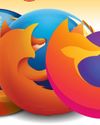
Linux Format
Fantastic Mr Firefox
Nick Peers takes a trip down memory lane to reveal the story behind the rise - and slight fall - of Mozilla's popular web browser.
9 mins
April 2023
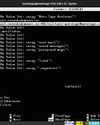
Linux Format
Set up your terminal and email like it's 1983
Jump in the hot terminal time machine with Mats Tage Axelsson who emails from the command line using the latest technology.
8 mins
April 2023

Linux Format
Universal layer text effects with GIMP
Posters use them, films and presentations are hard to imagine without them: text effects. Attract attention with Karsten Günther and GIMP.
8 mins
April 2023

Linux Format
Jump to a federated social network
Nick Peers reveals how you can get up and running with this free, decentralised and non-profit alternative to Twitter.
9 mins
April 2023
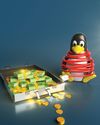
Linux Format
Free our SOFTWARE!
Taking anything for granted is dangerous, so Jonni Bidwell and Mike Saunders revisit how the free software movement got started to help free us from proprietary tyranny!
4 mins
April 2023
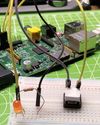
Linux Format
Master RPI.GPIO
Les Pounder goes back to the early days of the Raspberry Pi - and his career with this classic library! -
5 mins
April 2023
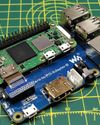
Linux Format
Waveshare Zero to Pi3
Transform your Pi Zero into a Pi 3, they promised Les Pounder, but it's more like adding on go-faster stripes.
2 mins
April 2023

Linux Format
The Best OPEN SOURCE Software Ever!
In an attempt to trigger controversy, Michael Reed and Neil Mohr unequivocally state these are the greatest free software apps ever. Probably. We’re just trying to be helpful.
19 mins
April 2023

Linux Format
Linux-Mandrake 7
Simplicity and a wide range of applications make this a great distribution for all Linux users.
2 mins
April 2023
Translate
Change font size

